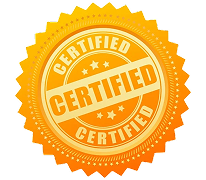Training Overview
This course is designed for graduate students who have no technical background. It will provide them with comprehensive training on basic design concepts, including web and mobile application template design using Figma/Photoshop. As they progress to the advanced level, students will learn to create UI-UX for standard applications by mastering HTML, CSS, and Bootstrap.
Duration
130 Hrs
(completes in 4 months)Course Fee
₹24,000
Course Structure
-
book_2 Module 1: UI Design Principles & AI-Enhanced Layouts
topicUI Design Fundamentals
- • Design principles for web, mobile apps, and dashboards
- • Modern product design principles & responsive design strategies.
- • Visual hierarchy, typography, and grid systems.
- • Creating & maintaining design systems and component libraries.
topicTools & Technologies
- • Photoshop vs. Figma: Raster vs. Vector-based workflows.
- • AI-powered Figma plugins: Auto UI generation using text prompts.
-
book_2 Module 2: UX Design, Research & Prototyping
topicUX Fundamentals
- • Design Thinking methodology.
- • User Research techniques: interviews, surveys, empathy maps.
- • Accessibility standards (WCAG compliance).
- • Usability heuristics and cognitive load reduction.
topicUser Journey Mapping & Interaction
- • Creating personas and user flows.
- • Wireframe creation.
- • Navigation structures and interaction patterns.
topicPrototyping & Testing
- • Prototyping interactive screens.
- • Visual storytelling techniques.
- • Usability testing, A/B testing methods, user feedback integration.
-
book_2 Module 3: HTML & Semantic Markup with AI Support
topicHTML Foundations
- • Semantic HTML5 structure (nav, section, article, aside, etc.).
- • Forms, inputs, accessibility tags (aria-label, alt text, etc.).
topicAI in HTML Development
- • Auto-generation of HTML layouts using prompts.
- • AI-based accessibility validation and structure improvements.
-
book_2 Module 4: Responsive CSS & Styling Automation
topicCSS Essentials
- • Selectors, Box Model, Pseudo-classes, Transitions, Animations.
- • Flexbox, Grid systems, Media Queries for responsiveness.
topicAI Integration in Styling
- • Prompt-based style generation.
- • AI-powered light/dark themes, color schemes, spacing systems.
- • CSS optimization: minification, refactoring with AI tools.
-
book_2 Module 5: Bootstrap Framework & AI Conversion Tools
topicBootstrap 5 Overview
- • Containers, Grid, Breakpoints, Utilities, Components.
- • Difference between Bootstrap and Tailwind.
topicAutomated Conversion & Layout Building
- • Figma to HTML conversion using AI.
- • Building responsive layouts using AI-generated structure templates.
- • Advanced UI elements: Modals, Navbars, Accordions, Carousels.
-
book_2 Module 6: JavaScript & UI Interactivity (with AI Help)
topicJavaScript Foundations
- • Variables, Functions, Loops, Events, ES6 syntax.
- • DOM manipulation, Event handling, Form validations.
topicjQuery Enhancements
- • Animations, effects, plugins for smoother UX.
- • Building responsive layouts using AI-generated structure templates.
- • Advanced UI elements: Modals, Navbars, Accordions, Carousels.
topicAI for Code Assistance
- • Auto-generate scripts for interactivity.
- • Generate animations and transitions with prompt-based AI tools.
-
book_2 Module 7: WordPress Website Building and Template Design
topicWordPress CMS Basics
- • Installation, Admin Panel, Themes, Plugins, Creating Pages, Posts, Menus, Contact Forms.
- • Creating custom themes in WordPress.
-
book_2 Module 8: Testing, Optimization, SEO & Accessibility
topicAI-Powered Testing & Optimization
- • Browser/device compatibility testing using AI.
- • Code validation (HTML/CSS).
- • Image optimization and lazy loading with AI tools.
topicAI in SEO & Analytics
- • Generating optimized meta tags, alt texts, and descriptions.
- • Keyword research and AI-generated content recommendations.
- • AI-powered traffic insights and heatmaps.
AI-Driven Responsive Website Development
In this project work, students will professionally create a website following all the modern-life project development protocol as mentioned below.
- • Define user needs using research and persona creation.
- • Design user flow, wireframes, and create a responsive UI using Figmas.
- • Convert design into code using HTML, CSS, JS, and Bootstrap.
- • Apply AI tools for optimization, accessibility, SEO, and performance.
Finally, students will deploy their website using AI-powered hosting solutions and monitor its performance with AI-driven insights, ensuring a professional and optimized final product.

Certification as Trainee Web Designer & Programmer
On successful completion of the training and the assigned project work on Web Designing, students get certified as "Trainee Web Designer & Programmer" by our software division SysAlgo Technologies.


